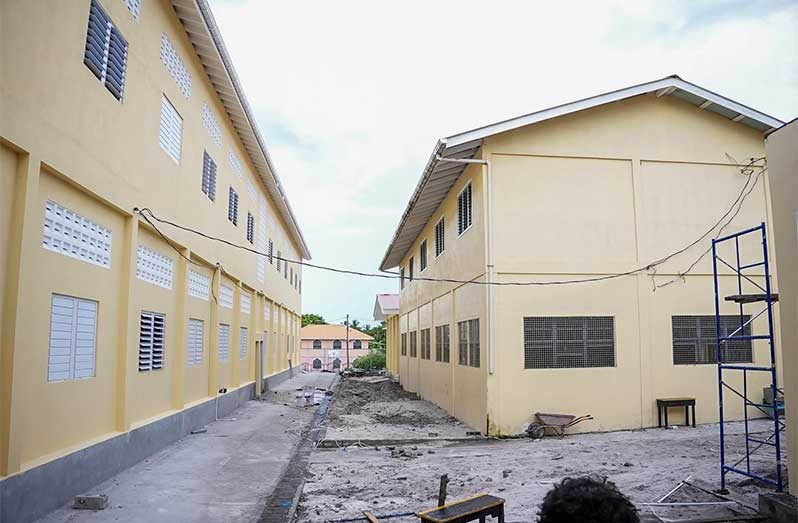THE Government of Guyana is moving closer to achieving universal secondary education in the Moruca sub-region of Region One, with several new schools under construction to eliminate long-standing barriers to learning for hinterland students.
During a recent visit to the region, Minister of Education, Priya Manickchand, met with Deputy Chief Education Officer (D-CEO) for Amerindian and Hinterland Education Development (AHED), Marti De Souza, and National School Feeding Programme Coordinator, Nigel Richards, to discuss ongoing investments in education for hinterland communities.
For villages such as Waramuri and Kwebanna, the secondary schools now being built will be the first of their kind, ending the need for students to endure long and arduous journeys to attend classes. In some cases, children from Waramuri have had to walk four to five hours or paddle across rivers to reach Santa Rosa Secondary School, which is currently upgrading its dormitory facilities.
“These challenges will cease for students once the secondary school is completed,” De Souza said, noting that before the end of 2025, the Moruca sub-region is expected to have universal secondary education.
Richards reflected on his experience in Moruca since 1994, recalling that Santa Rosa Secondary once had only five teachers, 80 to 90 students, and four subjects offered at the Caribbean Secondary Education Certificate (CSEC) level. With the introduction of business subjects, enrollment grew to more than 400 students, and new dormitories allowed children from surrounding villages to access education. Today, some villages, like Waramuri, no longer need to send children away, as they have their own secondary schools. Construction is also set to begin on a new secondary school in Manawarin.
Richards also highlighted the positive impact of the breakfast programme, introduced last year following requests from parents and teachers. “Some of these children come from very far, and by the time they get to school, the food they would have eaten at home would have worn out. Now they get two meals daily at no cost, which helps them focus on their learning,” he said.
Minister Manickchand noted that the percentage of trained teachers in the hinterland has risen significantly, along with the total number of teachers nationwide. “When we started in 2020, we had about 7,000 teachers. We now have just under 15,000 — more teachers and better-trained teachers,” she said.
She emphasised that the Government’s education agenda goes beyond building schools, focusing on comprehensive support through cash grants, free textbooks, breakfast programmes, and continuous teacher training to ensure quality education for all students.



.jpg)









